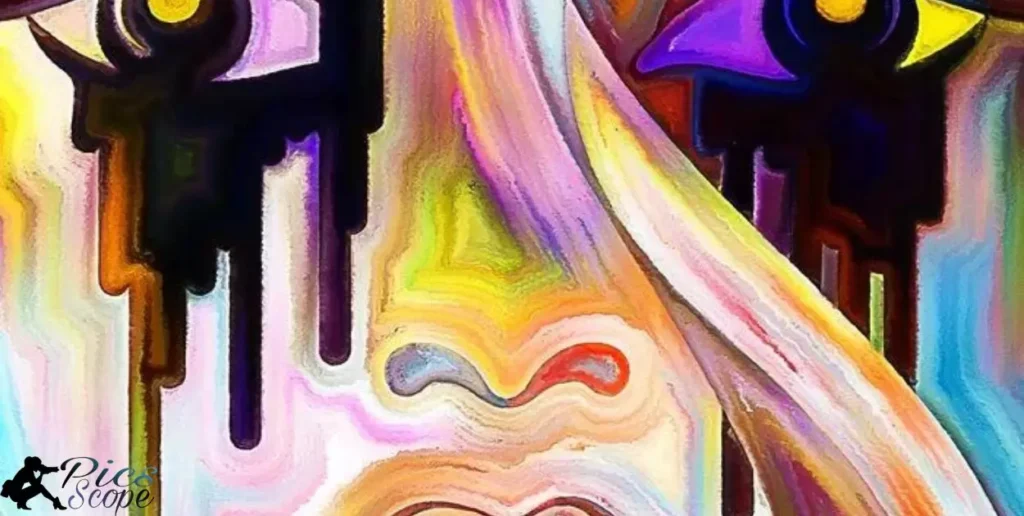The Variety Principle of Design involves incorporating diverse elements such as color, shape, size, and texture to avoid monotony and enhance overall visual appeal.
In the design world, the Variety Principle is the key to breaking away from uniformity, infusing designs with uniqueness, and captivating viewers with dynamic and compelling compositions.
This principle, when applied strategically, transforms static compositions into visually stimulating works, allowing designers to communicate effectively, evoke emotions, and create memorable visual experiences.
Understanding the Core Concept
The core concept of the Variety Principle of Design is about using different elements to make designs more interesting. It means adding various things like colors, shapes, sizes, and textures to avoid making designs look the same. When designers understand this core idea, they can create visuals that catch people’s attention and keep them interested.
In simpler terms, the Variety Principle is like adding spice to a recipe – it makes the whole dish more flavorful. By using diverse elements, designers avoid making designs boring and predictable. So, understanding the core concept helps designers create designs that stand out and grab people’s interest at first glance.
Elements Involved in Creating Variety
Creating variety in design involves using different colors, shapes, sizes, and textures. These elements bring diversity and interest to the overall composition. For instance, experimenting with vibrant colors, various shapes, and contrasting textures can instantly enhance the visual appeal of a design.
Mixing and matching these elements strategically helps break monotony and captures the viewer’s attention. By understanding how to play with colors, shapes, sizes, and textures, designers can effectively apply the Variety Principle, making their designs dynamic and engaging.
Importance in Design Composition
In design composition, the Variety Principle holds a crucial role. It ensures that the visual elements in a design aren’t dull or repetitive. By incorporating a mix of colors, shapes, sizes, and textures, designers create interest and make their work more engaging.
Without the Variety Principle, designs risk becoming bland and uninteresting. Viewers are drawn to compositions that break away from monotony. Importance in design composition lies in the ability to capture attention, evoke emotions, and communicate effectively through a well-balanced interplay of diverse elements.
Why Does the Variety Principle Matter in Design?

In design, the Variety Principle matters because it adds excitement and breaks away from the usual. When designs have diversity in colors, shapes, and sizes, they capture people’s attention. Variety keeps things interesting, making the audience more engaged and interested in what they see.
Designers use the Variety Principle to avoid monotony and make their creations stand out. When each element in a design is different, it creates a dynamic and compelling visual. People remember designs that use variety because they leave a lasting impression, making the design more impactful and effective.
Captivating Audiences through Diversity
Diverse designs capture people’s attention. When designers use various elements like colors, shapes, sizes, and textures, it makes designs more interesting. Viewers are drawn to the variety, and it keeps them engaged. It’s like a visual journey where each element adds excitement to the overall experience.
Imagine a world of design where everything looks the same. That would be dull and uninteresting. The Variety Principle brings life to designs, making them dynamic and captivating. By incorporating different elements, designers ensure that audiences stay interested and find visual content appealin
Breaking Away from Design Monotony
Breaking Away from Design Monotony is crucial for creating visually compelling content. It involves using the Variety Principle to introduce diverse elements and avoid predictability in design. This not only captures attention but also adds vibrancy and interest to the overall visual experience.
| Elements of Variety | Description |
| Colors | Introduce a spectrum of hues to evoke different emotions and highlight focal points. |
| Shapes | Utilize a mix of geometric and organic shapes to create visual interest and balance. |
| Sizes | Experiment with different sizes to emphasize certain elements and create a sense of hierarchy. |
| Textures | Incorporate varied textures to add a tactile dimension and enhance the overall aesthetic. |
The Impact of Variety on Viewer Engagement
The Variety Principle of Design has a powerful impact on how viewers engage with visual content. When diverse elements like colors, shapes, and sizes are strategically incorporated, it captures the audience’s attention and keeps them interested.
Incorporating variety ensures that the viewer’s experience is dynamic and compelling. By avoiding monotony, designers can create visual compositions that resonate with the audience, fostering a connection that goes beyond a mere glance.
Enhancing Visual Communication, A Design Imperative
Visual communication is crucial in design. It’s about making information clear and engaging through visuals. The Variety Principle of Design is a key tool for enhancing this communication.
Incorporating diverse elements like color and shape adds interest. Viewers are more likely to pay attention when designs are dynamic. Designers, by embracing variety, ensure their messages are not just seen but also remembered.
How Can Designers Apply the Variety Principle?

Designers apply the Variety Principle by mixing different elements like colors, shapes, sizes, and textures. They carefully balance these elements to create dynamic and interesting compositions.
By using a variety of visual elements, designers make their work stand out and capture the viewer’s attention effectively. To apply the Variety Principle, designers should focus on achieving harmony in their designs.
They need to think about how each element contributes to the overall composition. By strategically using variety, designers can tailor their approach to different contexts, ensuring their designs communicate messages clearly and leave a lasting impact on the audience.
Strategies for Balancing Diverse Elements
- Consider Color Harmony: Choose a color palette that complements each other and aligns with the overall design theme.
- Play with Shapes and Sizes: Experiment with a variety of shapes and sizes to create visual interest and balance within the design.
- Texture Integration: Introduce textures to add a tactile dimension, enhancing the overall sensory experience of the design.
- Hierarchy of Elements: Establish a clear hierarchy among diverse elements to guide the viewer’s focus and maintain coherence.
- Consistency in Theme: Ensure that diverse elements contribute to a consistent theme, avoiding visual clutter and confusion.
- Negative Space Utilization: Effectively use negative space to give breathing room and balance to the overall design.
- User-Centric Approach: Consider the target audience and their preferences, tailoring the variety to resonate with the intended viewers.
- Iterative Testing: Regularly test and refine the balance of diverse elements through feedback and iterations.
Achieving Harmony in Design Composition
In design, achieving harmony means making all the different parts work well together. It’s like creating a pleasant and balanced visual experience for the viewer. Designers do this by carefully arranging elements such as colors, shapes, and sizes to ensure they complement each other, resulting in a cohesive and pleasing overall look.
When designers aim for harmony, they make sure nothing in the design stands out too much or feels out of place. Each element plays its part, contributing to the whole, and the viewer can easily take in the design without any distractions. By achieving harmony, designers create designs that are visually satisfying and convey a sense of unity and balance.
Tailoring Variety to Different Design Contexts
In design, it’s essential to adapt variety to different contexts. This means tailoring diverse elements like colors, shapes, sizes, and textures to suit the specific requirements of each project. By customizing variety, designers ensure that their creations resonate effectively within the intended design context.
Whether it’s graphic design, web design, or other creative endeavors, the flexibility to tailor variety allows designers to cater to the unique demands of each situation. This adaptability ensures that the variety principle remains a versatile tool, enhancing the impact and relevance of designs across various design contexts.
Successful Applications of the Variety Principle
- Strategic Color Palettes: Implementing a diverse range of colors to create visual interest and evoke specific emotions.
- Varied Typography: Using different fonts, sizes, and styles to add dynamism and hierarchy to textual elements.
- Differential Image Sizing: Playing with image sizes to emphasize key elements and guide the viewer’s attention.
- Textural Contrast: Incorporating a mix of textures in design elements to enhance tactile and visual experiences.
- Dynamic Layouts: Experimenting with diverse arrangements and compositions to keep the viewer engaged.
- Icon and Symbol Diversity: Utilizing various icons and symbols to convey information or reinforce brand identity.
- Interactive Elements: Introducing interactive features to engage users and provide a multi-sensory experience.
- Adaptive Design: Tailoring variety to different screen sizes and devices for a seamless user experience.
- Seasonal Themes: Incorporating seasonal variations to keep designs fresh and relevant.
- Cohesive Branding: Balancing variety within a consistent brand identity for a harmonious overall aesthetic.
What Role Does the Variety Principle Play in Visual Dynamics?
The Yellowstone Photography Workshop Trent Sizemore Variety Principle of Design brings visual excitement by using different elements like colors, shapes, sizes, and textures. It transforms static designs into dynamic and engaging compositions, making them lively and interesting.
When designers apply the Yellowstone Photography Workshop Trent Sizemore Variety Principle, they create visual experiences that captivate the audience. By combining various elements, they make designs more memorable and communicate messages more effectively. This principle is a powerful tool in shaping the dynamics of visuals, making them vibrant and appealing to the viewer.
Transforming Static Designs into Dynamic Compositions
Designs come to life when they go from static to dynamic. This transformation happens by adding variety—mixing different colors, shapes, and sizes. The result is an engaging composition that captures attention.
Static designs can feel dull, but introducing dynamic elements changes everything. Imagine a painting with the Variety Principle of Design, incorporating varied colors or a website with different shapes and sizes. It’s like turning a still image into a vibrant and captivating experience for the viewer.
Using Variety to Evoke Emotional Responses
Designers use variety to make people feel things. Colors, shapes, and sizes can create different emotions. By using variety, designers aim to evoke specific feelings in the audience.
When a design includes a mix of elements, it triggers emotional responses. A well-balanced use of variety can make a design more appealing and relatable. This approach actively engages viewers, making the emotional impact of the design more potent and memorable.
Creating Unforgettable Visual Experiences
In design, making visual experiences unforgettable involves using a mix of colors, shapes, sizes, and textures. These elements create a dynamic and engaging composition that captures the viewer’s attention instantly.
A world without variety principle of design—monotonous and predictable. The key is to embrace diversity, allowing each visual element to contribute to the overall experience. Through the intentional use of colors, shapes, sizes, and textures, designers can craft memorable visuals that resonate with viewers and make a lasting impact.
The Synergy of Colors, Shapes, Sizes, and Textures in Design
Colors, shapes, sizes, and textures work together in design to create captivating visual experiences. When designers carefully combine these elements, they produce dynamic compositions that grab the viewer’s attention.
The interplay of vibrant colors, varied shapes, different sizes, and appealing textures contributes to the overall aesthetic appeal of a design. Each element plays a role in shaping the visual narrative, making the design visually engaging and memorable.
Designers strategically leverage this synergy to communicate effectively and evoke specific emotions, ensuring that the audience remains captivated by the harmonious blend of colors, shapes, sizes, and textures within the composition.
In What Ways Does the Variety Principle Shape Design Outcome?
The Variety Principle shapes design outcomes by infusing diversity into visual compositions. Designers use a mix of colors, shapes, sizes, and textures to create engaging and dynamic visual experiences.
This approach allows for effective communication, leaving a memorable impact on the audience. By incorporating the Variety Principle, designs become more than just static images—they evolve into vibrant and compelling works.
This principle ensures that the audience remains captivated, as the variety of elements adds interest and uniqueness to the overall design. In shaping design outcomes, the Variety Principle becomes a powerful tool for designers to convey messages, evoke emotions, and stand out in a visually saturated world.
Communicating Effectively through Design Choices
In the realm of design, effective communication is paramount. Designers utilize various elements to convey messages, emotions, and ideas to their audience. The following table illustrates how the Variety Principle influences design choices and contributes to meaningful communication.
| Design Element | Role in Communication |
| Colors | Evoke emotions, set the tone, and convey meaning. |
| Shapes | Create visual interest and define key elements. |
| Sizes | Emphasize importance and guide the viewer’s focus. |
| Textures | Add depth and tactile sensations for engagement. |
The Variety Principle empowers designers to make deliberate choices in each of these elements, fostering effective communication through intentional and dynamic design.
Leaving a Lasting Impression on the Audience
The Variety Principle of Design ensures your audience remembers your message. By using diverse elements like color, shape, and size, you make your designs stand out. This approach captivates viewers and helps your message stay with them long after they’ve seen your work.
When you implement the Variety Principle, your designs become dynamic and visually stimulating. This captivation allows for effective communication without relying on passive techniques. Ultimately, your goal is to leave a lasting impression by using variety strategically in your visual compositions.
Fostering Innovation in Creative Processes
In creative processes, fostering innovation is about encouraging new ideas and approaches, following the Variety Principle of Design. It means inspiring creativity and thinking outside the box to find fresh solutions. When innovation thrives, it brings a dynamic energy to the creative journey.
By actively fostering innovation guided by the Variety Principle of Design, creators can break free from routine and discover novel ways to express their ideas. It involves creating an environment that values experimentation and welcomes diverse perspectives..
Evolving Approaches to Incorporating Variety in Design
Design trends are always evolving. Currently, we see a shift towards more dynamic and interactive designs. Designers are increasingly exploring new ways to incorporate variety into their creations, moving beyond traditional static formats.
One emerging trend is the use of technology to enhance design experiences. Augmented reality (AR) and virtual reality (VR) are becoming popular tools for creating immersive and diverse design elements.
As we move forward, the integration of these technologies is expected to play a significant role in shaping the future of design, offering designers innovative ways to engage audiences and bring variety to their visual narratives.
Variety Principle Of Design Example
In design, the Variety Principle brings life to visuals by using diverse elements. For instance, consider a website homepage. Instead of using the same color, shape, and size for every element, apply the Variety Principle.
Use different colors for buttons, vary the shapes of images, and mix up font sizes. This creates a dynamic and engaging design, catching the visitor’s eye and making the page more interesting.
In a graphic design project, like a poster, play with variety. Use a mix of bold and light fonts, incorporate diverse colors, and experiment with different shapes. By applying the Variety Principle.
You make the poster visually appealing, ensuring that each element stands out. This simple principle adds vibrancy to designs, making them more captivating and effective in communicating your message.
Unity Principle Of Design
The Variety Principle of Design is about introducing diverse elements to add interest and contrast in a composition. It’s like mixing different puzzle pieces to create a visually stimulating and dynamic whole.
In design, variety means incorporating different elements like color, shape, size, and texture to break away from monotony. It’s about strategically blending these diverse components to evoke interest and capture the viewer’s attention. Picture it as a carefully orchestrated symphony of elements, each contributing to a harmonious and impactful design outcome.
Variety Principle Of Design Painting

The Variety Principle of Design in painting involves using different elements like colors, shapes, and textures to make the artwork more interesting. Artists apply this principle to break the monotony, creating dynamic and engaging compositions.
Incorporating a variety of colors and shapes grabs the viewer’s attention, making the painting visually appealing. By skillfully balancing these elements, artists breathe life into their work, ensuring it captivates the audience and communicates a rich, diverse visual experience.
Variety Principle Of Design In Art
The Variety Principle of Design in art means using different elements to make the artwork interesting. Artists use various colors, shapes, sizes, and textures to create diversity in their compositions. This principle helps prevent the art from looking boring or predictable.
When artists follow the Variety Principle, they can capture people’s attention more effectively. By adding a mix of elements, like vibrant colors or varied shapes, the artwork becomes dynamic and engaging. It’s a simple yet powerful concept that artists use to bring life and excitement to their creations.
Contrast Principle Of Design
The Contrast Principle of Design is all about making elements stand out by highlighting their differences. It’s like putting black text on a white background or pairing a large object with a small one.
This principle adds visual interest by creating noticeable distinctions in color, size, shape, or texture. When designers apply the Contrast Principle, they guide the viewer’s attention and enhance the overall impact of their designs.
By emphasizing differences between elements, they make the composition more dynamic and engaging. Whether it’s in graphic design, web design, or any visual creation, mastering the Contrast Principle helps designers communicate effectively and create visually compelling pieces.
Emphasis Principle Of Design
The Emphasis Principle of Design is about making certain elements stand out in a composition. It helps guide the viewer’s attention to specific focal points, creating a visual hierarchy. Imagine a poster where the main message is highlighted in bold.
Designers use contrast, color, and positioning to apply the Emphasis Principle effectively. By strategically emphasizing elements, whether through size, color, or placement, they ensure that viewers quickly grasp the primary message or focal point in a design.
FAQ’s
What does variety mean in principles of design?
In design principles, variety refers to the use of diverse elements like color, shape, and size to enhance visual interest.
What is an example of the principle of variety?
An example could be a graphic design composition that combines different colors, shapes, and textures to create a dynamic and engaging visual experience.
What are varieties in design?
Varieties in design encompass the diverse elements incorporated, such as color palettes, shapes, sizes, and textures, to avoid monotony and create visual appeal.
Why is the principle of variety used?
Designers use the principle of variety to break away from uniformity, capturing attention, and infusing uniqueness into compositions, resulting in more compelling and memorable visual experiences.
Conclusion
The Variety Principle of Design serves as a dynamic framework for creating visually appealing and engaging compositions. By incorporating diverse elements like colors, shapes, sizes, and textures, designers breathe life into static designs, transforming them into vibrant and captivating experiences for viewers.
This principle stands as a testament to the power of diversity in design, offering a pathway to break away from monotony and leave a lasting impact on audiences. In the world of design, understanding and applying the Variety Principle is not just a guideline but a key to unlocking creativity and effective communication.
It’s about embracing differences, playing with contrasts, and strategically blending various elements to craft designs that not only capture attention but also communicate messages with clarity and resonance.
As designers continue to explore the endless possibilities within this principle, the evolution of visual storytelling and communication remains an exciting journey, with the Variety Principle of Design at its core.







